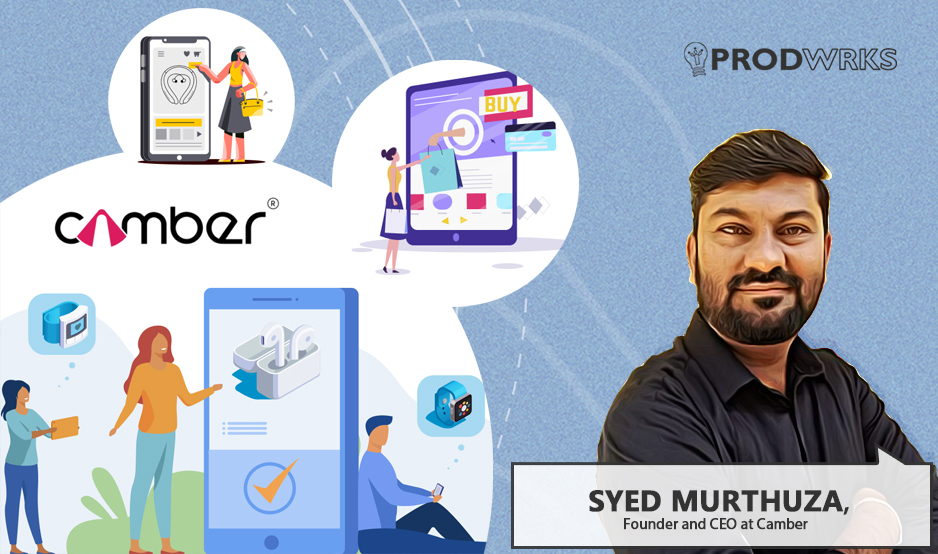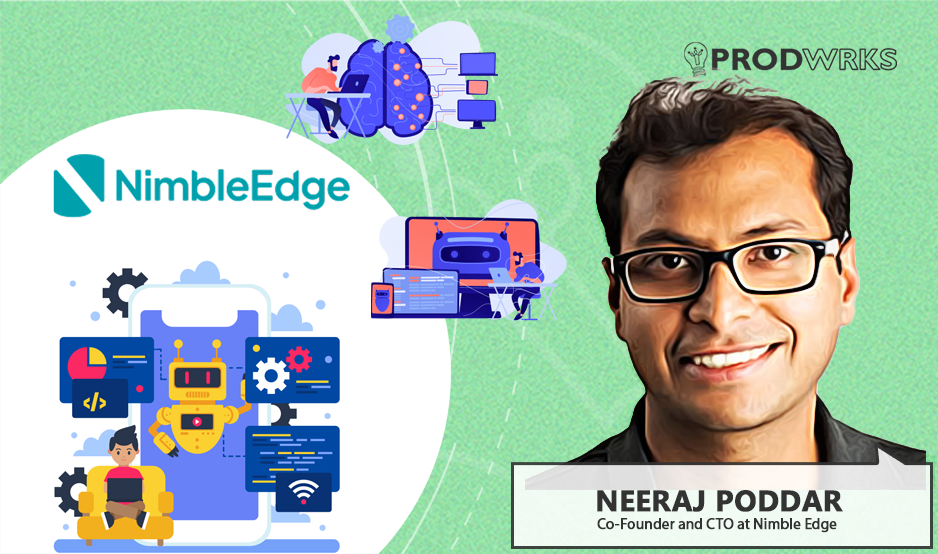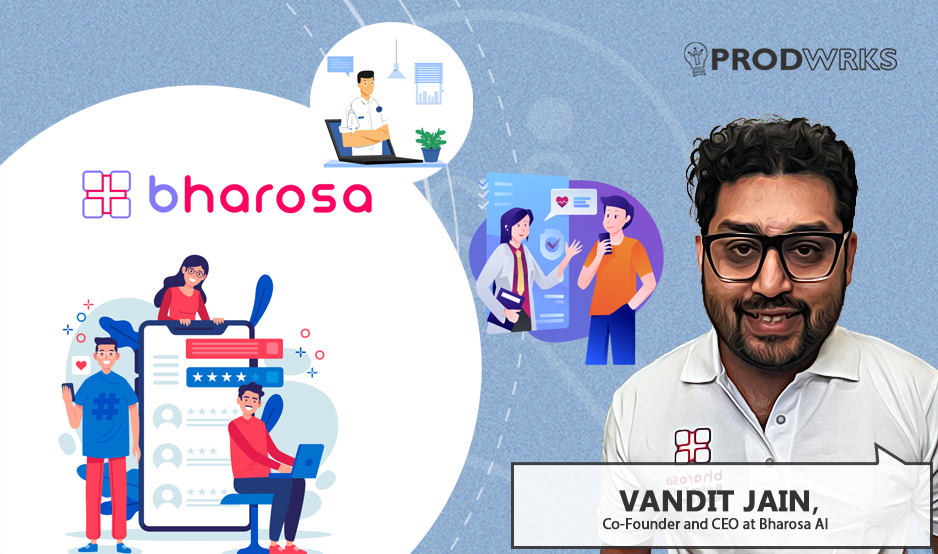
Talent discovery is an ever-present problem in the world of startups. On the one hand, job providers have a hard time finding the right talent for their ongoing projects and on the other hand, talented job seekers need the right avenue to showcase their proof of work and get the attention of the job providers.
Recognizing this gap, Riten Debnath has built Fueler.io, a platform which helps individuals build a portfolio to showcase their skills that, in turn, helps them connect with potential job providers. These individuals can use Fueler.io to create a log or proof of all their work in a single place to validate their personal brand superfast.
Fueler has recently accounted for more than 10,000 proof of works on the platform, with 15,000 registered members and 30,000 people in the community. In an exclusive conversation with ProdWrks, Riten shared the inspiring story behind how he built Fueler.io.
The Genesis of Fueler.io
Before starting Fueler.io, Riten was deeply immersed in the startup landscape, working closely with founders as a freelancer and consultant. It was during this period that he observed the critical challenge of identifying high-impact individuals for ongoing projects.
Being rooted in Agartala, a small town in North East India, Riten recognized the untapped potential surrounding him. He says, “In every tier-2 and tier-3 city there are people out there who want to prove their worth. But most of the time they haven't got that opportunity to showcase their work. So there is a huge disparity in these cities and towns.”
Hence, Riten envisioned Fueler to disrupt the norm by creating a democratic and equal ground for talents. As markets become flooded with talent, Riten says that companies are now seeking individuals who are already skilled, eliminating the need for extensive training.
Drawing a parallel to fueling a vehicle, Riten says, “The fuel for businesses are the high impact people, and it's very hard to identify such people. So, how do we shorten that gap? That was our whole motivation to start Fueler. And a business owner always looks for people who can add value right after they join the organization.”
Here, he emphasizes the importance of ‘proof of work’, which serves as the bridge between learning and earning. Fueler enables knowledge workers, such as writers, designers, developers, and marketers, to showcase their proof of work and build custom portfolios of their work super easily and fast
Talking about finding product-market fit (PMF) of Fueler, Riten pointed out that “Fueler is not there yet”. He says Fueler is at the pre-PMF stage. The beginning of Fueler.io was not a calculated move born from market research or a strategic business plan. It emerged organically from the experiences of its founder, a freelancer seeking a streamlined way to manage a diverse portfolio.
The initial validation, therefore, came from a place of genuine need and passion. Riten asked himself a simple yet profound question: "If I, as a knowledge worker, find value in this platform, could others share the same sentiment?"
Fueler.io's Unique Value Proposition
From LinkedIn’s project showcase feature to various writing platforms like Medium and Substack, there are numerous spaces where individuals can display their work. However, these platforms often treat portfolios as mere features, lacking a dedicated focus.
Fueler.io takes a distinct approach. Explaining which, Riten said, “At Fueler, we keep proof of work at the center of attention, above everything. Proof of Work is the MVP. We want to give it special attention and build everything around that. It’s like having a place where projects are not just pieces of content on a webpage but are the main reason people visit.”
Fueler also has a B2B offering called ‘Fueler for brands’ which aims to bridge the gap between talented individuals and companies.
“Brands can open source their projects on the platform and based on that they get contributions from various individuals, creators, artists and professionals. They work on the project and create a space to collate the work. That way companies will get to know the exact skills individuals bring. And an individual who works on the project, will get a chance to prove themselves. They also can build their own portfolio if the project gets approved by the brand. So it gets displayed on their Fueler profile as a contribution. So it eventually makes their fueler profile valuable over time.”
The North Star Metric of Fueler
When asked about how Riten anticipates the success of fueler, he said the number of proof of works shared on the platform will determine it. Hence, it is their north star metric.
“Proof of work defines the value of our platform. Why? Because the more proof of work published on the platform, the value of the platform increases that way.”
The number of proof of works also inspires other creators to contribute more.
“When a user publishes a proof of work; it inspires others to learn from it. The other users think how they can contribute more. This way, the overall efficiency of the platform increases.”
As the repository of proof of work grows, so does the efficiency of the entire platform. In this vision, the conversation revolves around proof of work.
The Challenges Along the Way
The journey of building Fueler.io, like any startup, has been riddled with challenges.
“Being an early-stage startup, there are multiple challenges a team has to go through. One thing that is consistent across every startup is the clarity. What clarity do you have about your product? Is this something worthy or not? So clarity is something we struggle with because eventually, you can build stuff if you give time to it. But what's hard is figuring out which or what to build. Also, building what users need and desire. It's very hard to have clarity on that.”
Aside from the ongoing struggle for clarity, Riten says Fueler also encountered the usual challenges like—team dynamics, managing growth, and the never-ending battle for resources. These challenges, though daunting, were not unique to the team.
But, the team at Fueler has recognized that the key to solving this challenge lies in communication with the users – open, honest, and direct communication.
Riten said, “Our team works a lot on the one-to-one communication where we try to go with a natural approach. We try to make the conversion very organic so that the user shares what they feel about a product. We have derived a lot of learnings from one-on-one conversation with our community members. That's how we came up with different features, different modules that we have built inside Fueler.”
Feedback Mechanism at Fueler
At Fueler, collaborating with their users and incorporating their feedback has always been a priority. To ensure they meet their users’ needs effectively, they engage with them at various stages of their product development cycle.
Pre-Launch Feedback: Before introducing any new feature, the team proactively reaches out to the users. They seek to understand their expectations, desires, and pain points. Their goal is to develop features that directly address their users’ specific challenges and enhance their overall experience.
Post-Launch Feedback: Once a feature is launched, the team continues to seek feedback, focusing on how the new addition is working for users. Detailed monitoring of user activity patterns and frequency helps identify power users within the community. These active users become the team’s primary focus, allowing them to understand their behavior and preferences deeply.
Riten says they have received a lot of criticism for Fueler, which have proved to be the secret ingredient for their growth.
"All the criticism that we have received have actually saved us. It has shaped the way we are building Fueler today. Every criticism has given us new ideas for the way we should be presenting Fueler or the way we should be positioning it. Even if someone says we have a personal website, we cannot use Fueler, I have replied to them – You can be on both the places. We are not competing with each other. Instead, we are friends with each other."
How is User Feedback Implemented in Fueler?
Consistency in feedback is the bedrock upon which Fueler make developments. When users encounter challenges or struggle within the platform, the team dives deep into understanding the core issues. Is there a way to simplify a process? Can they create a feature that streamlines user journeys? These questions fuel their brainstorming sessions, driving them to devise solutions that directly address user pain points.
However, the process isn’t a one-size-fits-all endeavor. “Every time, it works differently. It is not the same as we are a startup right now. We need to have a lot of processes. But, more than the process, we go with A/B testing with different approaches sometimes. Based on that, we decide, again, we follow up on those.”
Being a startup with limited resources, Fueler.io has learned the art of focused decision-making.
"More people bring more friction in the team, unless there is clarity. Also, a lot of time, it depends on the leadership team as well. How exactly do they cut off the noise? A lot of things we do at Fueler is to cut off the noise. We write things down, like what we have to get; these are our key metrics. We have to get rid of all other things that are noise. We are a bootstrap startup. We have minimal resources to operate in. So, we cannot make mistakes. That is why all decisions that we take, we try to keep it better than average."
With limited resources at hand, the qualitative approach to feedback holds paramount importance for Fueler.io.
"We go with a qualitative approach for the feedback. Why quality? Because that is what is important right now for us. We cannot spend resources and time on quantitative feedback. We don't have multiple engineers as well. That is why the quantity is something we cannot prioritize right now. Quality is essential for us, and we prioritize it."
Community- A Digital Auditorium
Fueler’s community members have been a driving force for feedback. Their insights and feedback fuel the team’s progress, enabling them to create a platform that empowers knowledge workers worldwide.
While talking about community, Riten said, “I see our community more as an auditorium where we invite people, give them a seat, and they will sit there and have a good time there. So the way I see the community is, it’s a chance to build together with them.”
His approach centers on delivering consumer surplus—providing the community with value that surpasses expectations.
“We believe in consumer surplus. It is a very important metric. So, in our community angle, we always go with this consumer surplus mindset. Can we create abundance for our people? Can we create value for them? So that they are overwhelmed with it but with a proper path.”
Recognizing that some individuals might be reserved in group settings, they take their community game to another level by having one-on-one interactions.
“More than the group conversation, we go on a one-on-one conversation, and that helps us understand the person even better because a lot of time people are refraining themselves from sharing in the community openly. They don't share their vulnerabilities a lot of the time. But when we personally connect with the people, we get to know a lot of emotional stories. Hence, we will be able to have that trust in us.”
Looking forward, he anticipates the potential of in-person gatherings. He believes these face-to-face interactions hold the true magic of community building and is enthusiastic about witnessing the community thrive both in the digital realm and in real-world connections.
The Journey Ahead
The awareness around proof of work right now is low. Hence, one of the core goals of Riten is creating massive awareness around the concept of ‘proof of work.’
“Growth is obviously one of the things that we look forward to. Because we have to build our distribution really big. Why distribution? Is it because our product is going to be big? No, that is not the main reason. The main reason is we have to create massive awareness around proof of work. That is why we want to grow big. Because proof of work is going to cut noise for a lot of people out there.”
Fueler.io’s vision isn’t just about becoming another platform; it’s about becoming an indispensable ingredient in the recipe of life.
“We are also thinking about how Fueler can become Elaichi(cardamom) in the user's main course. We want to become an ingredient in their life, not the main course. Because the main course is always replaceable, but they cannot replace Elaichi or ginger. We want to become that Elaichi. So we want to become that one ingredient so good that users should feel this is the flavor of life they need in their life.”
Furthermore, Fueler.io’s future roadmap includes harnessing the power of LinkedIn, a platform known for its professional network. “LinkedIn is something we are looking forward to using more often. Build our whole community there where we help content writers, marketers around the world to create value for them.”
On the product front, Fueler.io is gearing up to increase engagements. “We are going to implement gamification and algorithms in the platform. So that it eventually increases engagement.”
Fueler’s long-term plan also involves creating an open-source collaboration platform. Here, brands and knowledge workers are invited to come together. This collaborative ecosystem will redefine how work is recognized, valued, and appreciated.
Entrepreneurial Wisdom for Aspiring Entrepreneurs
Our conversation with Riten ended with invaluable lessons learned from navigating the wild journey of building a startup. These insights are not just reflections; they are guiding principles for aspiring entrepreneurs venturing into the world of product development and leadership.
1. Cultivate the Habit of Reading:
Entrepreneurship isn’t just about execution; it’s also about constant learning and growth. Reading isn’t a passive activity; it’s akin to sharpening your axe. Your mind needs continuous nourishment and stimulation. Reading has the power to change perspectives, enhance communication, and add value to others’ lives.
2. Build Your Online Presence:
In the digital age, your online presence is your gateway to the world. Invest time in building a strong online distribution network. Building an audience online not only amplifies your reach but also connects you with diverse perspectives and ideas.
3. Practice Detachment from your Product:
As an entrepreneur, detachment from your product is important. Falling in love with your product is natural, but it can cloud your judgment. Regularly practice a zero mindset – clear your mind and approach each day as if you’re starting from scratch. This mental reset sharpens your focus, allowing you to evaluate your product objectively.



